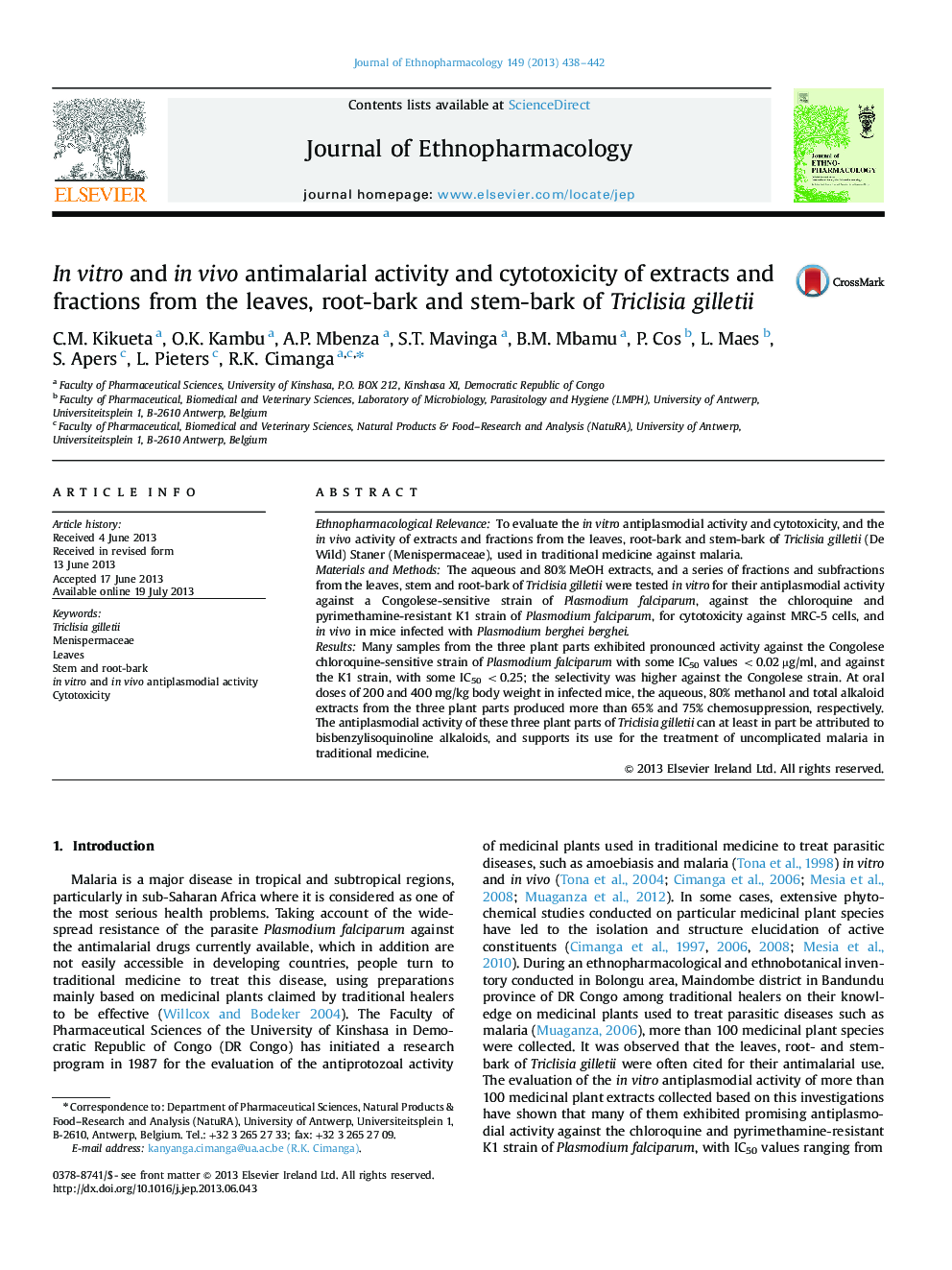| Article ID | Journal | Published Year | Pages | File Type |
|---|---|---|---|---|
| 5837200 | Journal of Ethnopharmacology | 2013 | 5 Pages |
Ethnopharmacological RelevanceTo evaluate the in vitro antiplasmodial activity and cytotoxicity, and the in vivo activity of extracts and fractions from the leaves, root-bark and stem-bark of Triclisia gilletii (De Wild) Staner (Menispermaceae), used in traditional medicine against malaria.Materials and MethodsThe aqueous and 80% MeOH extracts, and a series of fractions and subfractions from the leaves, stem and root-bark of Triclisia gilletii were tested in vitro for their antiplasmodial activity against a Congolese-sensitive strain of Plasmodium falciparum, against the chloroquine and pyrimethamine-resistant K1 strain of Plasmodium falciparum, for cytotoxicity against MRC-5 cells, and in vivo in mice infected with Plasmodium berghei berghei.ResultsMany samples from the three plant parts exhibited pronounced activity against the Congolese chloroquine-sensitive strain of Plasmodium falciparum with some IC50 values <0.02 µg/ml, and against the K1 strain, with some IC50 <0.25; the selectivity was higher against the Congolese strain. At oral doses of 200 and 400 mg/kg body weight in infected mice, the aqueous, 80% methanol and total alkaloid extracts from the three plant parts produced more than 65% and 75% chemosuppression, respectively. The antiplasmodial activity of these three plant parts of Triclisia gilletii can at least in part be attributed to bisbenzylisoquinoline alkaloids, and supports its use for the treatment of uncomplicated malaria in traditional medicine.
Graphical abstractDownload high-res image (158KB)Download full-size image
